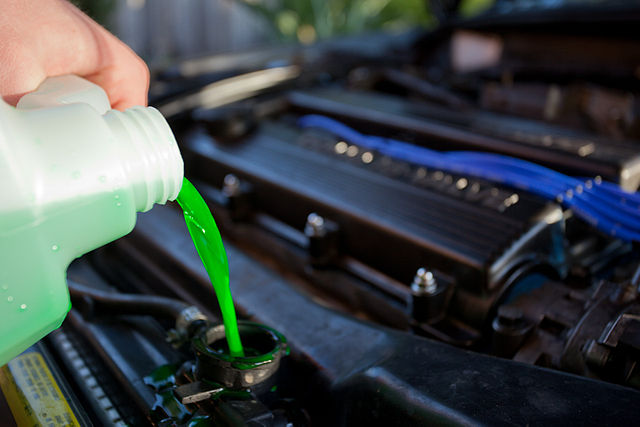Internal combustion engine cooling
Internal combustion engine cooling uses either air or liquid to remove the waste heat from an internal combustion engine. For small or special purpose engines, cooling using air from the atmosphere makes for a lightweight and relatively simple system. Watercraft can use water directly from the surrounding environment to cool their engines. For water-cooled engines on aircraft and surface vehicles, waste heat is transferred from a closed loop of water pumped through the engine to the surrounding atmosphere by a radiator.
A cylinder from an air-cooled aviation engine, a Continental C85 Notice the rows of fins on both the steel cylinder barrel and the aluminum cylinder head. The fins provide additional surface area for air to pass over the cylinder and absorb heat.
A typical engine coolant radiator used in an automobile
Coolant being poured into the radiator of an automobile
Radiator (engine cooling)
Radiators are heat exchangers used for cooling internal combustion engines, mainly in automobiles but also in piston-engined aircraft, railway locomotives, motorcycles, stationary generating plants or any similar use of such an engine.
A typical engine coolant radiator used in an automobile
Coolant being poured into the radiator of an automobile
Honeycomb radiator tubes
Thermosyphon cooling system of 1937, without circulating pump





